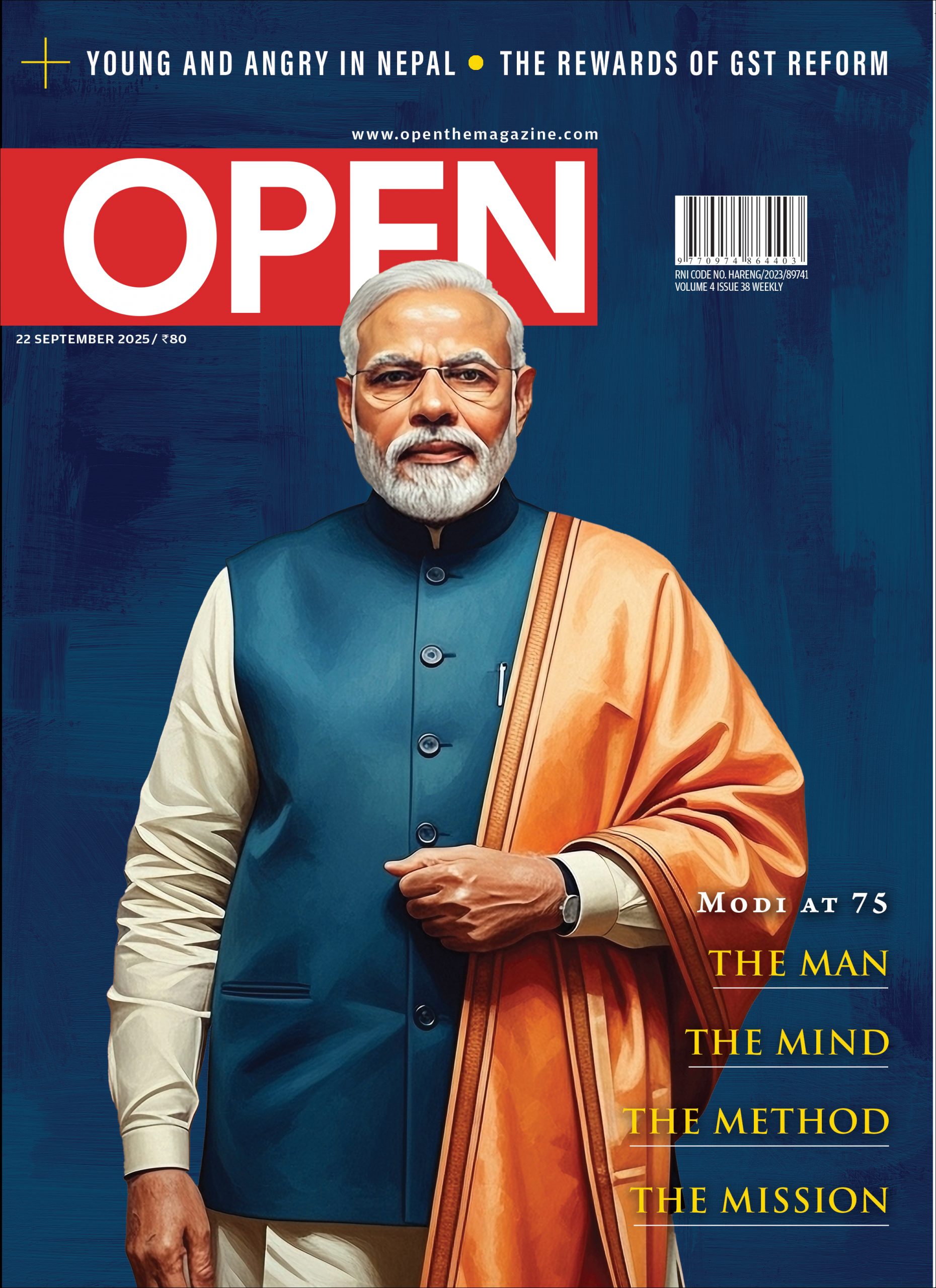The Ugly Indian Tourist
Live from the beaches of Goa
 Lhendup G Bhutia
Lhendup G Bhutia
 Lhendup G Bhutia
Lhendup G Bhutia
 |
30 May, 2018
|
30 May, 2018
/wp-content/uploads/2018/05/Uglytourist1.jpg)
A FINGER EMERGES at the window of a bright pink and green tourist bus. This is the heart of Goa, the road that connects Miramar beach at the confluence of the Mandovi River and the Arabian Sea to Dona Paula, among the state’s most expensive residential areas. The sun is gleaming down. Under the tarred road, as its sides reveal, lies a rusty red. A little away, the sea is gently thrashing the sand of Miramar beach. The bus is stationary. People are moving to and fro, in cars, on bikes and on foot. And then, this limp finger at the back of that bus suddenly comes alive, and from it sprouts a long jet of liquid. The camera zooms in. And, as the video grab that went viral online shows, it isn’t a finger at all. It is a penis, urinating onto a busy street.
Vijay Sardesai, Goa’s minister of town and country planning, says the video made him seethe with rage. He has seen many instances of bad tourist behaviour, but this was a new low. “These people, these people,” Sardesai says, “if they are not the scum, what are they?”
Indians are travelling like never before, thanks to rising income levels, growing aspirations to see new destinations (or perhaps be seen there on social media), and a fast-expanding industry of enablers. But it has also given the boor his moment in the sun, the obnoxious fellow with uncouth attitudes, petty sense of entitlement and outrageous demands. Yes, the one you see crowding the aisle even before the aircraft has come to a stop, holding cabin bags packed with free onboard cutlery and earphones, elbows pointed at anyone who tries to march ahead, and once out, the one using his grey hair to demand a wheelchair and an attendant to breeze through immigration even though he’s perfectly capable of doing so without the privilege.
The UN World Tourist Organization says nearly 50 million Indians are expected to travel abroad every year by 2020. Cabin crew members of international airlines aren’t pleased, many of them disclosing they detest being put on routes to India. But while the ugly Indian tourist abroad is a well reported phenomenon, a little examined aspect is the conduct of tourists within the country. With an estimated 90 per cent of all Indian holidayers headed for domestic destinations, it’s a sizeable number.
Goa, which is right up there on a bulk of wish lists, is a good place to look. It is India’s own ‘sunshine state’, an exotic holiday spot on the country’s own shores, a place famous for endless parties, cheap booze and assorted thrills that to many a mind include easy drugs and sex.
The state is undergoing a rapid transformation. If there is feverish construction, with everything that is old and beautiful like Portuguese villas being pulled down to make way for hotels and apartment buildings, there is also a crisis of air and water pollution. But little is altering Goa like tourism is. Always cramped for space, the tourist season leaves one gasping for breath. The state is home to some 1.4 million people, but far larger numbers land here every winter. By official data, over 6.3 million came in 2016, a 360 per cent jump over the past decade-and-a-half. “Some years ago, there were just two daily flights into Goa. Now there are some 75 flights. Plus a huge number of trains, buses, cars,” says Savio Messias, a hotelier and president of Travel and Tourism Association of Goa. Chief Minister Manohar Parrikar projects the number of tourists at 10 million in 2020, and is on record hoping for 5 million more. Few of those will be foreign arrivals. At the turn of the century, international tourists accounted for 23 per cent of Goa’s annual influx. In 2016, they made up only a tenth of the total.
How has all this impacted Goa? As one local resident puts it, “Goa is finished.” It’s not just how visitors behave that the resident complains of, but all that the boom is resulting in. Rapid construction, for example, seems to have scant regard for the ecology. Hills and fields are being dug up, even as bridges and highways arise amidst ever larger blocks of concrete across the landscape. The Floor Space Index is all people seem to care about. “FSI, FSI, ‘How much FSI?’ That’s all I keep hearing now in Goa,” says Sardesai. We are seated in his beautiful living room, the bungalow and its decor done in old Portuguese style. “I understand in some places you have no option but to [build vertically], but you cannot make Goa into another Gurgaon.” The minister says he’s referring to the high-rise plans of north Indian builders for Goa when he says one cannot create ‘a Haryana’ in the state, and not to tourists from that part of India. “You have to retain what Goa is. I am not a Raj Thackeray. I am very open to people coming here… But I want to say this: fifty years back, Goa chose not to merge with Maharashtra [in the 1967 referendum]. We chose to stay by ourselves, to protect our own unique heritage and culture. But today I think we are struggling to save that.”
In the face of a home state fast turning unrecognisable, many locals are choosing to leave. Some are applying for Portuguese passports. Others are moving further inland, away from the crowded beaches, where some semblance of an idyllic life still exists. Aditi Seshadri, a social sector professional who moved to Goa two years ago with her husband who runs a restaurant in Saldona village, says she opted to live away from the beachfront. “It is a very different life than the one I imagined when I first came here. We live in a quieter place. That Baga and Calangute stretch, I came to realise once we moved in, is actually referred to as ‘the gutter’ by locals.”
“Today you have to cater to the Indian client if you want to survive. That’s your bread and butter now. The whole business has changed” – Cruz Cardozo, president of the Shack Owners’ Welfare Society, Goa
According to state government statistics, a domestic tourist in Goa spends four times less than his foreign counterpart. This, despite several of these foreigners being travellers on shoestring budgets themselves. Several hoteliers claim that the spending ratio is even starker, perhaps ten to one.
A few years ago, when Indian tourists did not dominate the market so strongly, some shacks had reportedly barred their entry. Cruz Cardozo, president of the Shack Owners’ Welfare Society in Goa, had sought to justify it on the ground that like restaurants, shacks also had the right to grant or deny admission as they chose. But today, Cardozo who runs Pearl’s Beach Cafe on Cavelossim beach in South Goa, does not care much for such a right. “What’s the point?” he says. “Today you have to cater to the Indian client if you want to survive. That’s your bread and butter now. The whole business has changed.”
Many domestic visitors these days are what Sardesai calls ‘drive-in’ tourists. Arrivals in buses and jeeps are increasingly common for long weekend holidays. They eat food they cook themselves on stoves brought along, sleep in their vehicles or on the beach, and use the fields as toilets. “These people don’t contribute one bit to the economy,” says Sardesai, “They only clog up the beaches and streets and dirty everything. We have to stop this sort of tourist from coming in.”
A HOTELIER WHO WAS thrust with the responsibility of running a 110-room resort close to Baga beach after his father’s death says the profile of his guests has changed entirely. Earlier, most of his rooms would be booked for Russian travellers who arrived on chartered flights. But over the years, the number of foreign guests has dwindled. For some time, he entertained talk of selling the resort. The hotelier has now slashed room tariffs. “I had to choose between full occupancy and [escalating] costs,” he says. But this has meant opening doors to all types of clients. “Oh, it is such a pain to deal with Indian tourists. They always bargain…” Reducing his voice to a hush, he adds, “Many of them, you see, they are flying for the first time.” What does he mean? He moves his hands to demonstrate how they eat, sans cutlery. “The other night, I caught a guest pissing onto a tree [next to the pool at the resort]. Once, one chap began to use the water cooler at the breakfast buffet to wash his hands. When I objected, he said, ‘Bhai, hum toh yahin peh haath dhoyenge (Brother, I will wash my hands here).’ He was just being an asshole,” he says.
Despite the apparent boom, few establishments appear to be making money. During the high-traffic season last year between Christmas and New Year, while Goa’s beaches were thronged with record numbers, hoteliers claim it did not translate into commercial gains. “We estimate a 30 per cent dip in hotel occupancy,” says Messias, “Many hotels were full, but some were running empty.” Sardesai says he disagrees with what the Chief Minister has been pushing for. “My point is we don’t need 15 million tourists in Goa, like our CM says,” says the minister. “We can do better with fewer tourists but those that spend more.” How can one achieve that? “By building things like golf courses,” he suggests.
Cardozo says business is tougher than it has ever been. “Domestic tourists are always asking for discounts,” he reports, “They want to use the sun beds for free. Why should I give it for free?” Just the night before, Cardoza tells me, two Indian couples ran up a bill of over Rs 1,500 but claimed they had only Rs 1,200 on them. “I just let them go. What do I do? What’s the point of arguing? It happens all the time. And if we say anything, we are told we are being racist.”
An amber sun dips into the sea, turning everything in the waters a sparkling golden hue. On the quieter beaches further south or up north, end-of-day sounds fill the air: seagulls flapping about and sea waves slapping the shore. Caucasian men and women, having turned a lobster red on their sun beds, are packing their sun lotions and towels into tiny bags. Local fishermen are checking their nets, while their sons play football.
On Calangute beach, however, the sights are different. There is a large Indian man stripped down to his Y-fronts. Around him emerge more of his gang, some of them bare-chested and others in axiomatic t-shirts (‘If you are hot, I am single’). A little away, waist-deep in water, two drunk men holding beer bottles swing their hips to an inaudible song. On the shore, some men seem to be mustering the courage to walk up to an apparent foreigner with a request for a selfie. A few Indian men accompanying women hold their hands tightly, as if in fear for their security. Nearby, a woman changes an infant’s diapers and leaves the refuse on the sand. Most of the beach is littered with garbage. There are plastic packets and bottles, some of them broken into shards, strewn all over. All signs of behaviour much too common to attract public reproach.
Drishti Marine, a private firm that has a contract for providing lifeguard services and keeping Goa’s beaches clean, claims to have collected some 1,070 tonnes of garbage from the state’s coast over the period of a year until December 17th, 2017. More recently, it began a music and art campaign at a few beaches, ‘#TeraMeraBeach’, to educate domestic tourists on the need not to litter.
“These people don’t contribute to the economy. They only clog up the beaches and dirty everything. We have to stop this sort of tourist from coming in” – Vijay Sardesai, Goa’s minister of town and country planning
But there are other issues as well. Like women feeling unsafe. Cardozo alleges that too many domestic visitors have a poor sense of social etiquette. They chase foreign women in bikinis for selfies, he says, and often try to find the slightest pretext to hug them. “Many of them just go crazy when they see someone in a bikini,” he says. “When this keeps happening, at some point word will spread and foreigners who want a quiet time will stop coming here.”
Precautionary measures are ignored too. With drunk men venturing too far out in the sea, there have been several cases of drowning. Drishti Marine’s lifeguards are on duty till 7 pm, but even during the day, unruly tourists often argue with them and disobey restrictions on going beyond a safety limit.
According to Sardesai, the government is currently working on an advisory, a list of dos and donts for visiting tourists. These might include a ban on alcohol consumption on the beach and on swimming in the sea after sunset. Lifeguards have reportedly suggested the idea of a ‘detention bench’, a place where drunk and unruly tourists can be restrained till they sober up. As the representative of shack owners, Cardozo has suggested that all shacks and restaurants serve alcohol only in cans, which would minimise the problem of glass shards in the sand. “These are small steps, we know,” says Cardozo. “But until the behaviour of the tourist improves, we will have to keep coming up with these small solutions.”
But if the Indian tourist behaves like a brat on the shore, he is often worse in the sea. The tourism boom has put marine life—dolphins, turtles and colourful inhabitants of the closeby coral reef— under intense stress. The seabed around the coastline is littered with garbage. In the last 10 years or so, as fishermen with small boats have lost a bulk of their catch to large trawlers, many of them have started letting out their vessels for dolphin-spotting trips.
According to marine conservationist Puja Mitra, founder of Terra Conscious, a social enterprise that conducts ethical dolphin tours, there are around 400 operators who conduct such trips. The Indian Ocean humpback dolphin, or Sousa plumbea, an endangered species according to International Union for Conservation of Nature, is found abundantly in the waters off Goa. According to Mitra, these dolphins prefer shallow water, usually 20 metres in depth, and rarely venture beyond 2-3 km from the coast. This makes Goa’s basin an ideal habitat for them but also exposes them to the dangers of over-eager tourism.
Hundreds of boats carrying inebriated and boisterous tourists now leave the shore every day for hour-long trips, often satisfied more by chasing rather than just spotting dolphins. The accepted norm is to watch them from a distance after shutting off the boat’s motor, as Terra Conscious does, but a pod of dolphins once spotted is now at risk of being chased all through the day, often by several boats as the sighting is relayed from one boatman to the next. Most are known to be found in Aguada Bay, a 3 km stretch between Candolim and Calangute beaches. During the tourist season, as many as 50 boats can be seen harassing the mammals at any given time of day.
These trips charge about Rs 300 per head. Until recently, many of these boats offered a full refund if a dolphin was not seen. This has been discontinued because sightings are getting rarer. “I was once in a boat with a crying mother and her sick baby who was vomiting. But the boatman would continue speeding and refuse to turn back because that would mean refunding everyone’s money,” Mitra says.
Mitra is originally from Bangalore. She became involved with dolphins while working for the Federation of Indian Animals Protection Association. Then she had managed to convince the government to axe a programme involving dolphin circuses across the country. She came to Goa some years ago to set up WWF’s local office and has stayed on. According to Mitra, many of the boatmen are migrant labourers who worked at cyber cafes and shopping malls before they began operating boats on a single day’s training. “Indians have this mentality of looking down on people who are manual labourers. Do you think a boatman who is insecure about his job will be able stand up to some drunk customer from Delhi who orders him to chase dolphins?”
As a result, many of these graceful creatures have begun to exhibit signs of stress. They are not socialising among themselves, probably mating less, and always appear to be tired. In the last six months alone, Mitra claims, 13 dead dolphins have been found, many of them very young, and 18 dead turtles. “In the case of turtles, you can tell [the cause of death]. Many of them have their flippers cut or their shells sliced clean, meaning they were hit by propellers. In the case of dolphins, you can’t quite tell. But the numbers and the fact that they are so young are quite alarming.”
“The Indian Ocean humpback dolphin is an endangered animal. But unfortunately, [this is] an unprotected environment. Goa has become an ‘everything goes’ state,” says Mitra. “There is an attitude that the water can take as much as you can shove in. But it is not like that. The north Arabian Sea is extremely rich in biodiversity. But unchecked, the corals, the dolphins, the turtles, they will all die.”
In this melee, locals have unsurprisingly begun to detest the hordes that descend on Goa’s shores every year. Last year, as local newspapers reported, several clashes took place between tourists and locals. Eugenia Rodrigues, a 46-year-old mother of three who lives in Sangolda village, wakes up every few mornings to find her field, which faces the street, sprouting not just paddy, but plastic bags filled with used sanitary pads, diapers and bottles. “I is getting very angry. I complaining to panchayat people. I telling tourist to not come here. Go away, shoo shoo. But no listen,” she says. “One day I going to crack his head open like watermelon.”
As we speak on the phone, Mitra tells me about one of her friends who owns a beautiful heritage house in Panjim, Casa da Moeda, which served as a mint in the mid-19th century. “IIt is such a beautiful old house, you know. But nowadays every few mornings, they find that people who come to play at casinos by the river have pissed or vomited outside their house,” she says.
Outside, on an uncrowded road that links Baga beach with a closeby marketplace, a north Indian tourist has managed to find another north Indian to dash against. Voices are raised, the anatomical parts of their mothers and sisters are remembered, more north Indians emerge and align themselves with one or the other party. But after a few slaps, a fight is averted. A group of onlookers has formed by now, a ring of tourists, and they look disappointed that the hostilities have fizzled out. They look wearily about and move on.
On the phone, Mitra tells me, “While the rest of the country is so repressed, they all look at Goa as this place where everything goes. Goa has become like a bad Hindi movie. Like that film Zindagi Na Milegi Dobara. A guy will save Rs 10,000, travel in a bus from wherever, and then he will step out, go to the nearest beach, drunk out of his wits, looking for his Katrina Kaif.” But of course, there is no Katrina Kaif around.

/wp-content/uploads/2025/09/Cover-Modi-scaled.jpg)













More Columns
I Missed A Flight Thanks To Robert Redford, Plus He Took My Magazine! Alan Moore
Robert Redford (1936-2025): Hollywood's Golden Boy Kaveree Bamzai
Surya and Co. keep Pakistan at arm’s length in Dubai Rajeev Deshpande